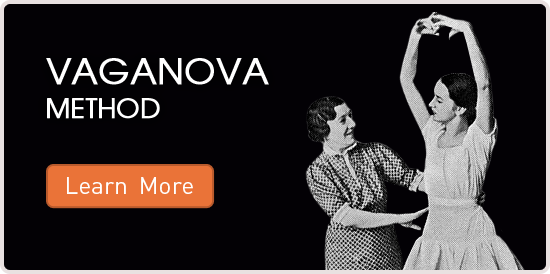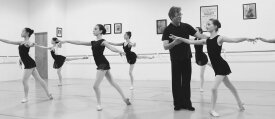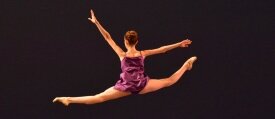Vaganova Method

The Vaganova Method is a ballet technique and training system devised by the Russian dancer and pedagogue Agrippina Vaganova (1879–1951). It is acknowledged all over the world as the foremost training syllabus of the classical ballet.
The Method is an extraordinary system that permits to develop the knowledge of how one’s body should be used in order to dance with expression, yet without injuries, like the best Russian dancers do. It is the foremost technique used by Mikhael Baryshnikov, Rudolph Nureyev, Natalia Makarova, Galina Ulanova, Maya Plisetskaya, and other stars of Russian classical ballet.
History
Upon graduating from the Imperial Ballet School in Saint Petersburg in 1897, Vaganova began dancing with the school's associated professional company, the Imperial Russian Ballet. She retired from dancing in 1916 to pursue a teaching career and in 1921 returned as a teacher at the school, which had been renamed the Leningrad Choreographic School.
During the 30 years she spent teaching at the Leningrad Choreographic School, Vaganova developed a ballet technique that combined elements of French, Italian, and earlier Russian technique, and a training method to teach the technique. The Method fuses elements of traditional French style from the romantic era with the athleticism and virtuosity of Italian technique. The training system is designed to involve the whole body in every movement, with equal attention paid to the upper body, legs and feet. Vaganova believed that this approach increases consciousness of the body, thus creating a harmony of movement and greater expressive range.
Tenets of the training method included development of lower back strength and arm plasticity, and the strength, flexibility and endurance required for ballet, and it incorporated a detailed instruction process that specified when to teach each topic and how long to teach it. In 1948, Vaganova authored a book titled Basic Principles of Russian Classical Dance, which outlined her training method and ballet technique. It continues to be an important text for ballet teachers to this day.

Following Vaganova's death in 1951, her teaching method was preserved by instructors such as Vera Kostrovitskaya and Vera Volkova. The creative evolution of Agrippina Vaganova's ideas continues to this day and is widely used by training institutions and professional ballet companies throughout the world. Today the Vaganova Method is the most widely used ballet teaching method in Russia, Europe, and North America.
Characteristics
The Vaganova training Method relies on the following principle: All training can be encompassed and displayed in the course of one grand pas de deux. Students are trained to prove this principle upon graduation, thus the reason for graduation performances in which the most talented students are given a grand pas de deux to perform.
Terminology used in the Vaganova Method often differs from other methods, and may also vary by locale. For example, the Vaganova grand pas de chat is commonly called saut de chat in the US, and Vaganova's battement jete is often called degage in other methods.
IBT Academy's Rich History in Vaganova Training
Many of Vaganova's students—such as Galina Ulanova, Natalia Dudinskaya and her last pupil Irina Kolpakova—became important figures in Soviet and Russian ballet. Irina Kolpakova currently resides in New York City and is American Ballet Theater's Ballet Mistress. Alexander Boitsov had an honor of partnering with her in Giselle in 1982, in the USSR, and they maintained a close professional relationship ever since. Irina Kolpakova is a true embodiement of Vaganova's legacy. Kolpakova was a Guest Faculty Member of IBT's Summer Program in 1996.

Alexander Boitsov, Artistic Director of IBT, was trained in Vaganova Method at the Kiev State Ballet Academy (Kiev, Ukraine was then part of the USSR.) His Ballet Masters were Vladimir Fidler and Vladimir Denisenko, famous Kirov and Bolshoi Ballet dancers, respectively.

Vaganova's conviction that all theory must be enriched by the experience of teaching and new developments in artistic practice is also at the core of the Method: "Look at life all around; everything is growing, everything is moving forward. Therefore I recommend [...] keeping in touch with life and with art."
Students at Vaganova-based schools—and here at IBT we adhere to this tradition—are expected to take daily courses in ballet as well as character (folk) dance, modern dance, calisthenics / strengthening, and study dance history, music, and language. It is believed that ballet student's cannot rely solely on the study of classical ballet.


Students at Vaganova-based pre-professional schools in the Imperial Russia and the Soviet Union were also expected to also take courses in choreography and pedagogy. These two subjects would help them to become not just excellent dancers but also outstanding choreographers, like IBT's Guest Choreographer Viktor Plotnikov, and well-trained teachers, like Alexander Boitsov, and his talented late wife Irina.





